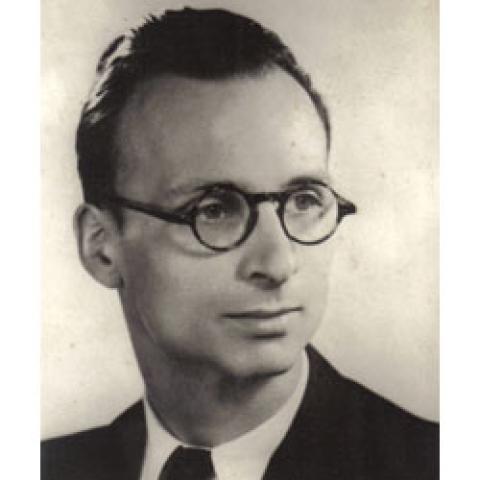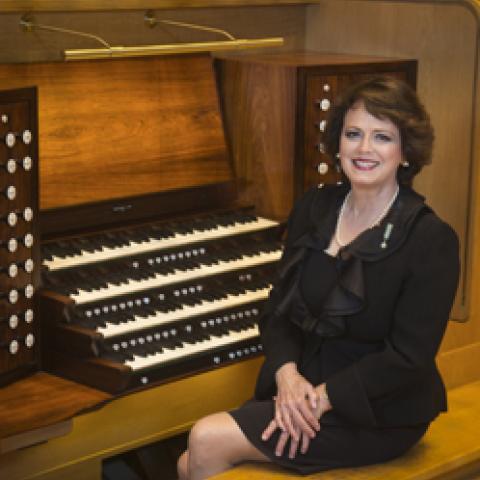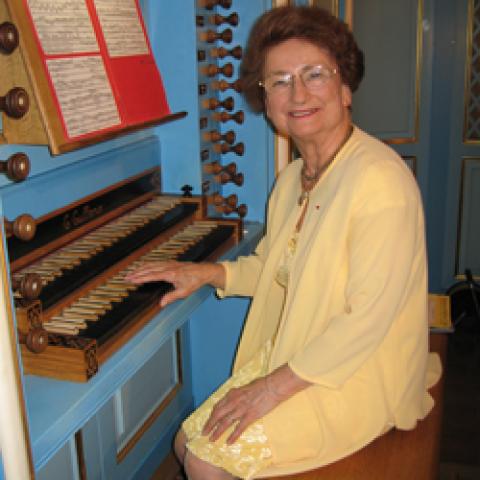James David Christie has performed around the world with symphony orchestras and period instrument ensembles as well as in solo recitals. The 1979 first prize winner of the Bruges (Belgium) International Organ Competition, he was the first American ever to win first prize in this competition, and also the first person in the competition’s eighteen-year history to win both the first prize and the prize of the audience. He has served as organist of the Boston Symphony Orchestra since 1978 and has performed and recorded with numerous major orchestras, including those of Vienna, London, Stuttgart, Paris, Philadelphia, San Francisco, San Diego, Seattle, New York, Boston, and others. He has made over fifty tours of Europe and performs regularly in Canada, Asia, Australia, and Iceland. James David Christie has served on many international organ competition juries, including those in Paris, Chartres, Biarritz, St. Albans, Amsterdam, Lübeck, Bordeaux, Dublin, Worcester, Calgary, Montreal, Dallas, Leipzig, Weimar-Merseburg, Tokyo, Moscow, Kaliningrad, Lausanne, Boston, Bruges, and others. Christie has recorded for Decca, Philips, Nonesuch, JAV, Northeastern, Arabesque, Denon, RCA, Dorian, Naxos, Bridge, and GM and has received several awards for his solo recordings, including the Preis der Deutschen Schallplatten Kritik and the Magazine d’Orgue: Coup de Coeur. James David Christie holds positions as the Distinguished Artist in Residence at the College of the Holy Cross, Worcester, Massachusetts, Chair and Professor of Organ at the Oberlin College Conservatory of Music, Oberlin, Ohio, and serves as College Organist at Wellesley College, Wellesley, Massachusetts. He has previously held positions at Boston Conservatory, Harvard University, M.I.T., and Boston University. In the fall of 2010, he was on sabbatical in Paris, France, where he served as visiting Professor of Organ at the Paris Conservatory.
A national French celebration took place March 24–27, 2011 in Saint-Germain-en-Laye, a Parisian suburb west of Paris and hometown of the composer Jehan Alain, to honor the centenary of his birth. The splendid event was organized by Dr. Aurélie Decourt, Jehan Alain’s niece and daughter of the celebrated French organist, Marie-Claire Alain, in conjunction with the city of Saint-Germain-en-Laye, the Chevalier family (for the performance of Maurice Duruflé’s music), the association Arts, cultures et foi, the General Council of the Department of the Yvelines, the National Museum of Archeology, SACEM—Société des auteurs, compositeurs et éditeurs de musique (the French association entrusted with the rights of composers, authors, and publishers), the Société Générale-Direction régionale de Saint-Germain-en-Laye, and Les Amis du Vieux Saint-Germain (an organization dedicated to preserving and celebrating the history and arts of Saint-Germain-en-Laye). The event was listed among the national 2011 celebrations of the French Ministry of Culture and was sponsored under the international patronage of Marie-Claire Alain, Gilles Cantagrel, James David Christie, John Grew, Georges Guillard, and Philippe Lefebvre.
Thursday, March 24
The event opened on Thursday evening, March 24, with a joyous ceremony: the placing of a plaque on the home of the Alain family at 46, rue du Pologne, by the mayor of Saint-Germain-en-Laye. Over one hundred people attended the event, including Jehan Alain’s three children, Denis, Agnès, and Lise, and his sister, Marie-Claire, the last living sibling of Jehan Alain. The new owner of the home invited those in attendance into her home to wander throughout the house; she generously provided and served champagne to everyone. It was the first time Marie-Claire Alain had been in the house since it was sold in the 1970s, and it was a very emotional experience for her to return to the home of her childhood.
Aurélie Decourt designed and personally arranged a marvelous exhibition at the Espace Véra, which included musical manuscripts, letters, and drawings by Alain; information about the Alain house organ and organs in general was provided by Guy Bovet and the Association Jehan Alain de Suisse. The exhibit was open from March 19 through April 8. On Saturday afternoon, participants were invited by Les Amis du Vieux Saint-Germain to attend a very moving ceremony at the grave of Jehan Alain, located in the military section of the cemetery in Le Pecq, a small town next to Saint-Germain where Jehan had lived with his wife Madeleine and his children. After the war, Jehan’s body was exhumed from his grave in Saumur and moved to Le Pecq. Madeleine is buried near her husband in the plot of her parents. On their way to the cemetery, the participants passed the house where the young married couple had lived.
International Colloquium “Music and Arts in the 20s and 30s”
Two days were devoted to lectures as part of the international colloquium entitled “Music and Arts in the 20s and 30s.” Aurélie Decourt opened the event on Friday, March 25 at the Salle du Musée d’Archéologie Nationale in the Saint-Germain Chateau with a marvelous lecture on Jehan Alain’s sources of inspiration. Guy Bovet spoke about the harmonium of Albert Alain (which had been housed in the very room where the lecture was given) and the last modifications on the Alain house organ, now located at Romainmôitier, Switzerland. Ton van Eck spoke of the organ that
Jehan Alain knew during his lifetime. Fabienne Stahl, who is organizing the catalog of the complete works of Maurice Denis, spoke of Denis’s use of the organ in his painting and showed that Denis used Marie-Odile Alain, Jehan’s sister who was killed in a mountain accident at a very young age, as his model for an organist in one of his paintings. Christophe Corbier lectured on Alain and his teacher, Maurice Emmanuel, and the use of modes in some of Alain’s piano works; a round-table discussion, led by Gilles Cantagrel, followed, concerning organists during Alain’s lifetime. The panel included Marie-Claire Alain, Jacqueline Englert (daughter of André Marchal), Marie-Louise Langlais (widow of Jean Langlais), Eric Lebrun (student of Gaston Litaize), and Christian Lesur (son of the organist-composer Daniel-Lesur). One laments that the music of Daniel-Lesur is not better known today; he was an extraordinary composer and his music deserves to be played and heard. Jacqueline Englert prepared an excellent talk on the close relationship of her father and Jehan Alain that was concise and beautifully delivered.
The afternoon session was devoted to Jehan Alain as composer. Vincent Warnier, the organiste-titulaire of Saint-Etienne-du-Mont, presided over this session. Roberto Antonello spoke of his thoughts on Alain’s music through Alain’s correspondence and Georges Guillard spoke of the “hidden” orchestra of Jehan Alain. Luc Antonini spoke on his new orchestration of Alain’s Trois Danses, which we were to hear later that evening. Vincent Warnier gave a very interesting talk on Maurice Duruflé’s large orchestral work, Trois Danses, which we were also to hear that same evening. Jean-Baptiste Robin’s talk, entitled “La griffe Jehan Alain,” was followed by another round-table discussion with Michel Bouvard (France), James David Christie (USA), Lynne Davis (USA), John Grew (Canada), James Higdon (USA), Jon Laukvik (Germany), and Wim Viljoen (Republic of South Africa)—all were students of Marie-Claire Alain, except for Mr. Bouvard. Each spoke about Alain’s music in their countries and its reception from the early 20th century through the present.
Friday evening, March 25
Friday evening, March 25, was the long-awaited premiere of the new orchestration by organist Luc Antonini of Alain’s Trois Danses, performed by the Orchestre National d’Ile-de-France under the direction of the American conductor, Jonathan Schiffmann, at the Théâtre Alexandre Dumas in the heart of Saint-Germain-en-Laye. Jehan Alain’s own orchestration of Trois Danses was lost during the last year of his life, and Raymond Gallois-Montbrun orchestrated the work in 1945. Critics viewed this orchestration as too heavy and too academic for Alain’s music and there was always a desire that someone would undertake a new orchestration, more in the exotic spirit of the young Jehan Alain.
Friday evening’s program included Debussy’s Prélude à l’après-midi d’un faune, certainly to pay homage to the most famous composer to hail from Saint-Germain-en-Laye. Sadly, the famous opening flute solo was lackluster and performed without poetry and with a very dull, uninteresting tone. The Chevalier family made possible the performance of Maurice Duruflé’s stunning Trois Danses, which date from 1936 (the year before Alain began his Trois Danses, also for orchestra). Certainly the high point of the concert, Duruflé’s Trois Danses elicited the orchestra’s finest performance of the entire evening. This work is a masterpiece and shows Duruflé as an orchestrator on the level of Claude Debussy, Maurice Ravel, and André Caplet.
Unfortunately, Antonini’s orchestration of Alain’s Trois Danses did not fare as well. One was expecting extensive use of orchestral color and this did not happen. The audience was ready for an explosive, colorful, on-the-edge orchestration that would bring the work to life like a rock band. The percussion was under-used and the orchestration in general was “textbook” and dull. One had the feeling that Antonini did not even know the organ version. We were told that Antonini was not happy with the results, and that he planned to rework the orchestration for a performance at the festival Toulouse les Orgues this fall. Schiffmann’s heavy, shapeless conducting did much to harm the performance and showed that minimal study had been done on the work. The orchestra sounded very under-rehearsed as well. The program concluded with a more polished performance of Ravel’s Ma Mère l’Oye, which was obviously in the repertoire of the orchestra. The audience responded enthusiastically and a movement was repeated as an encore.
Saturday, March 26
The colloquium continued on Saturday morning, March 26, under Georges Guillard’s leadership in the exquisite chapel of the Musée Maurice Denis, with topics concerning the works of Jehan Alain. Claire Denis, granddaughter of the famed artist Maurice Denis, gave a lovely introduction to his work and the efforts currently being undertaken to prepare a catalog of his works. Michel Fischer spoke on the great differences in the compositions of two close friends, Alain and Messiaen. Wilhelm Hafner lectured on the counterpoint in the instrumental work of Alain. This was followed by perhaps the most interesting of all the lectures: Jean-Marc Leblanc spoke on the influence of Charles Tournemire on Alain.
Norma Stevlingson spoke about the critical notes on the organ works, which she assisted Marie-Claire Alain to prepare for publication by Alphonse Leduc. Klaus Rothaupt recalled the teaching of Alain’s organ works by his sister, Marie-Claire. Yannick Merlin’s topic was Jehan Alain’s brother, Olivier Alain, and his compositions. Since Olivier’s death in 1994, Marie-Claire Alain has prepared editions of many of his works.
The morning session concluded with a round-table discussion on the global scope of Alain’s work, with Marie-Claire Alain, James David Christie, Gilles Cantagrel, and John Grew. The participants were treated to a sumptuous lunch prepared and served by members of Les Amis du Vieux Saint-Germain in the Saint-Germain-en-Laye chateau.
Afternoon concert
In the afternoon, there was a concert given by professional musicians from Saint-Germain, which included a wonderful performance of Jehan Alain’s Andante con variazioni et Scherzo for string quintet (this is the same music as the first two movements of Alain’s Suite pour orgue), the Trois mouvements for flute and piano, and Olivier Alain’s Souvenances for flute and piano (with well-known veteran flutist Luc Urbain). A beautiful performance of Olivier Alain’s Suite for violin and piano followed.
Perhaps one of the most touching moments of the entire festival was the singing of Jehan Alain’s beautiful song, Laisse les nuages blancs (poem of Francis Jammes) by Ariane Gommier, the great-niece of Jehan Alain, granddaughter of Marie-Claire Alain, and daughter of Anne Gommier and Marie-Claire Alain’s late son, Benoît. Members of the choir of the Claude Debussy Conservatory of Saint-Germain sang several secular and religious choral works of Jehan Alain to conclude the program.
Evening concert
The finest program of the festival took place at the Church of Saint-Germain-en-Laye on Saturday evening, March 26. Albert Alain held the position of organiste-titulaire at this church from 1924 until his death in 1971 and was succeeded by his daughter, Marie-Claire, who holds the position to this day. Jehan Alain often substituted for his father here as well. This program was unique and captivating. It featured the brilliant concert organist Michel Bouvard and the celebrated French actress Brigitte Fossey, reading excerpts from letters written by Jehan Alain from the front. The readings, carefully chosen by Aurélie Decourt, were interspersed among the organ works and were very moving. Brigitte Fossey is a marvelous actress and gave an outstanding presentation. Michel Bouvard was the perfect organist for this program; his playing was elegant, refined, colorful, full of spontaneity, poetic, and exciting—in short, he played just as one would have imagined Jehan Alain played his own works. He gave extraordinary performances of Alain’s two Fantasies and Trois Danses. This concert was a preview of the official performance scheduled for October 2011 at the international festival, Toulouse les Orgues.
Sunday morning
On Sunday morning, young students of the Conservatory Claude Debussy of Saint-Germain performed piano works of Jehan Alain. The second half of the program was devoted to Alain’s more mature works, such as Suite monodique and Tarass Boulba; Désiré N’Kaoua, a former student of Lazare Levy and Marguerite Long, performed this portion of the program. A specialist in the music of Ravel and French music in general, N’Kaoua recorded the complete piano works of Jehan Alain for the FY label in France.
Concluding concert
The Alain Centenary Celebration concluded with a concert in memory of Albert, Jehan, and Olivier Alain, with a large cast of performers: organists Eric Lebrun and Marie-Ange Leurent; the Camerata Saint-Louis, Georges Guillard, conductor; the Ensemble vocal de l’UFR de Musique et Musicologie en Sorbonne, Denis Rouger, director; soprano soloists Maud Gnidzaz, Lorraine Prigent, Clémence Olivier, and Ariane Gommier; mezzo-sopranos Anne-Marie Hellot, Violette Viannay, Camille Rondeau, and Mariette Desert; violinists Marie-Hélène Clausse and Stefano Catalano; violist Thierry Gileni; cellist Matthieu Fontana, and flutist Luc Urbain.
The program opened with Duruflé’s memorial to Jehan Alain, his Prelude and Fugue on the name of ALAIN. The audience was treated to a rare performance of the Kyrie and Gloria from Albert Alain’s Messe Solennelle en l’honneur de Saint-Louis. Many of Jehan Alain’s smaller organ works and vocal motets were performed, including his beautiful Messe modale for soprano, alto, flute, and string quartet. The program concluded with Olivier Alain’s moving memorial to his sister Marie-Odile, Plange quasi virgo (from Trois déplorations) for soprano and organ, and Jehan Alain’s most famous work, Litanies.
This concert was a wonderful way to conclude the festival and to celebrate the contributions of the entire Alain family to the city of Saint-Germain-en-Laye and the world. Marie-Claire Alain, who is now retired and who celebrated her 85th birthday on August 10, was in attendance for all the concerts. It was very moving to see the devotion and love of her many former students, colleagues, family, friends, and the public in general when she was welcomed at the concerts and receptions. The contributions of the Alain family from the early part of the 20th century through the present are amazing. Aurélie Decourt is a brilliant musicologist and works tirelessly for the Alain legacy. To mark the 100th birthday of Jehan Alain, she published an excellent book devoted to the history of the Alain family: “Une famille de musiciens au 20ème siècle, la famille Alain.” It is written in French and is published by Editions Hermann (http://www.editions-hermann.fr/).
Our deepest thanks to Dr. Decourt for putting together this entire festival and to Les Amis de Vieux Saint-Germain for their warm welcome and their tireless work—it was a magnificent celebration and tribute to Jehan Alain and the entire Alain family! n





